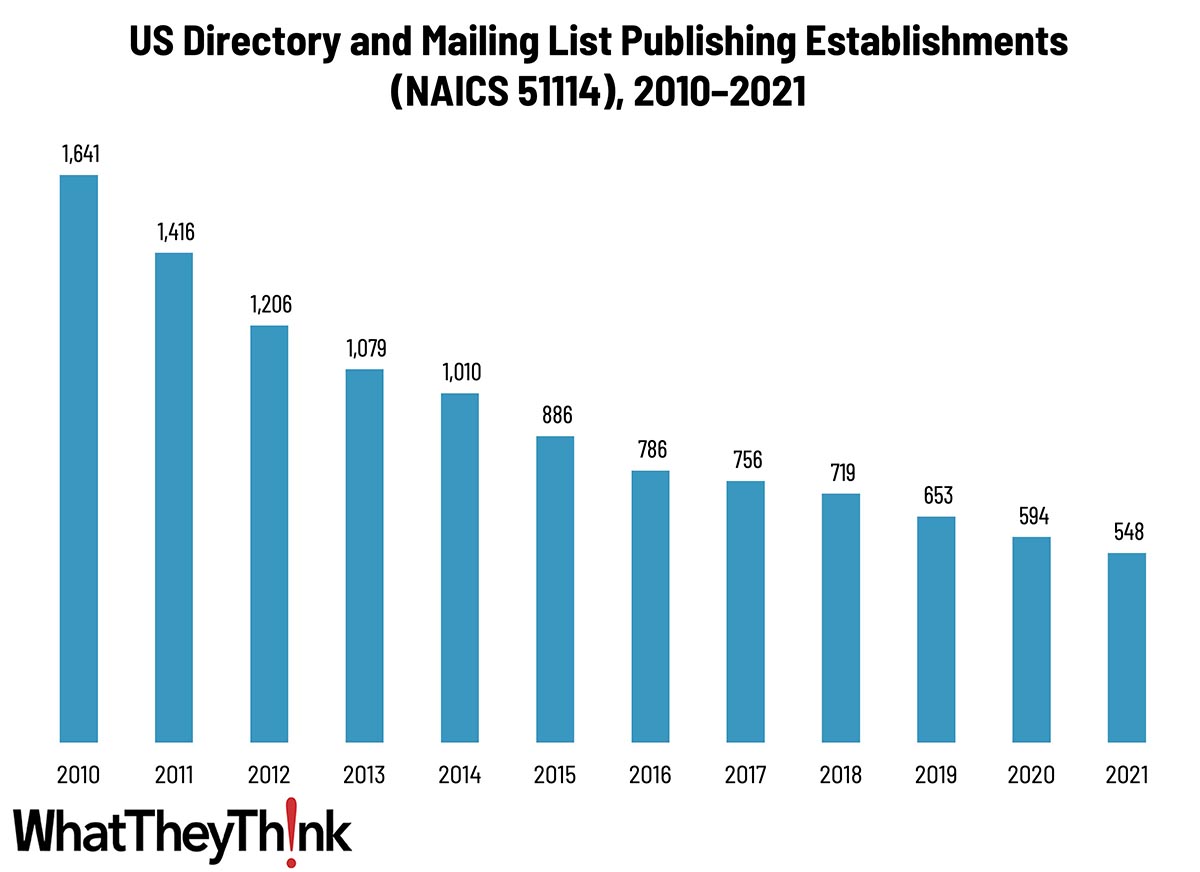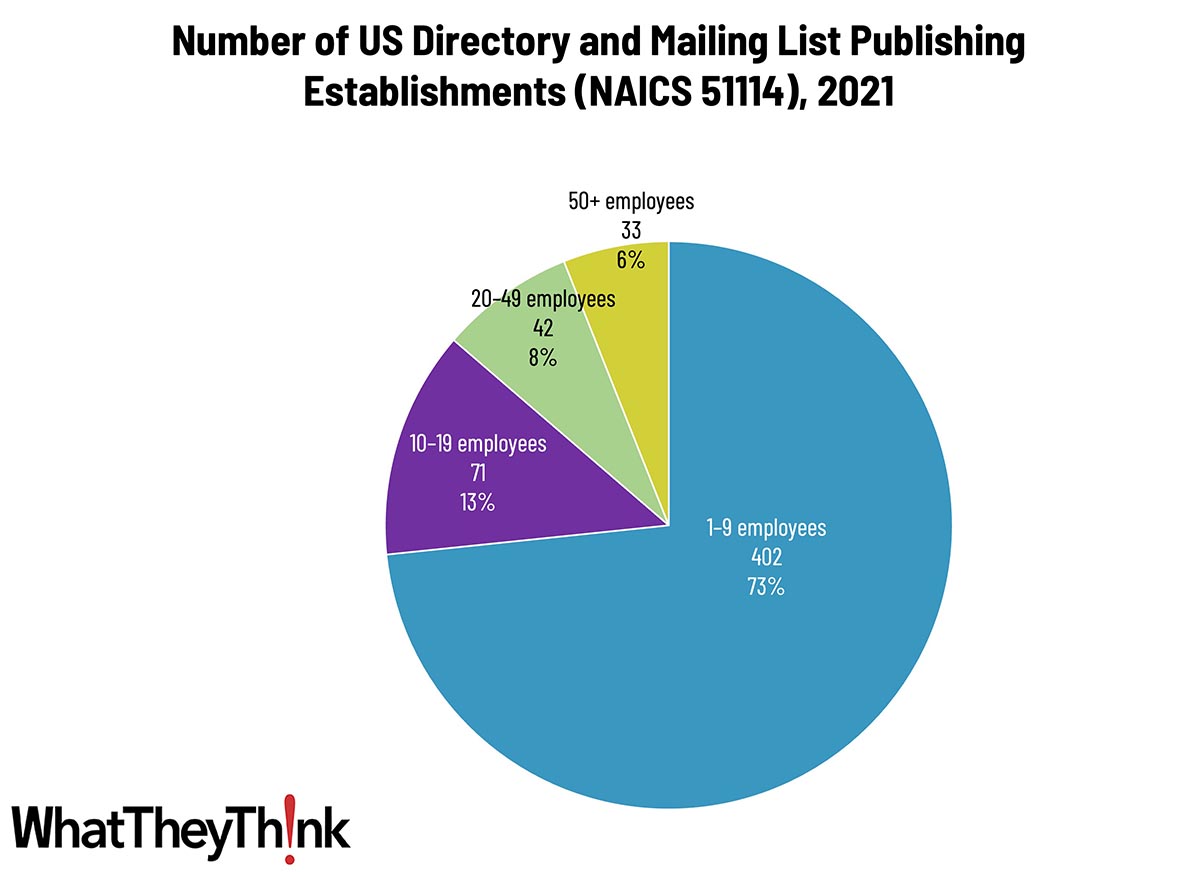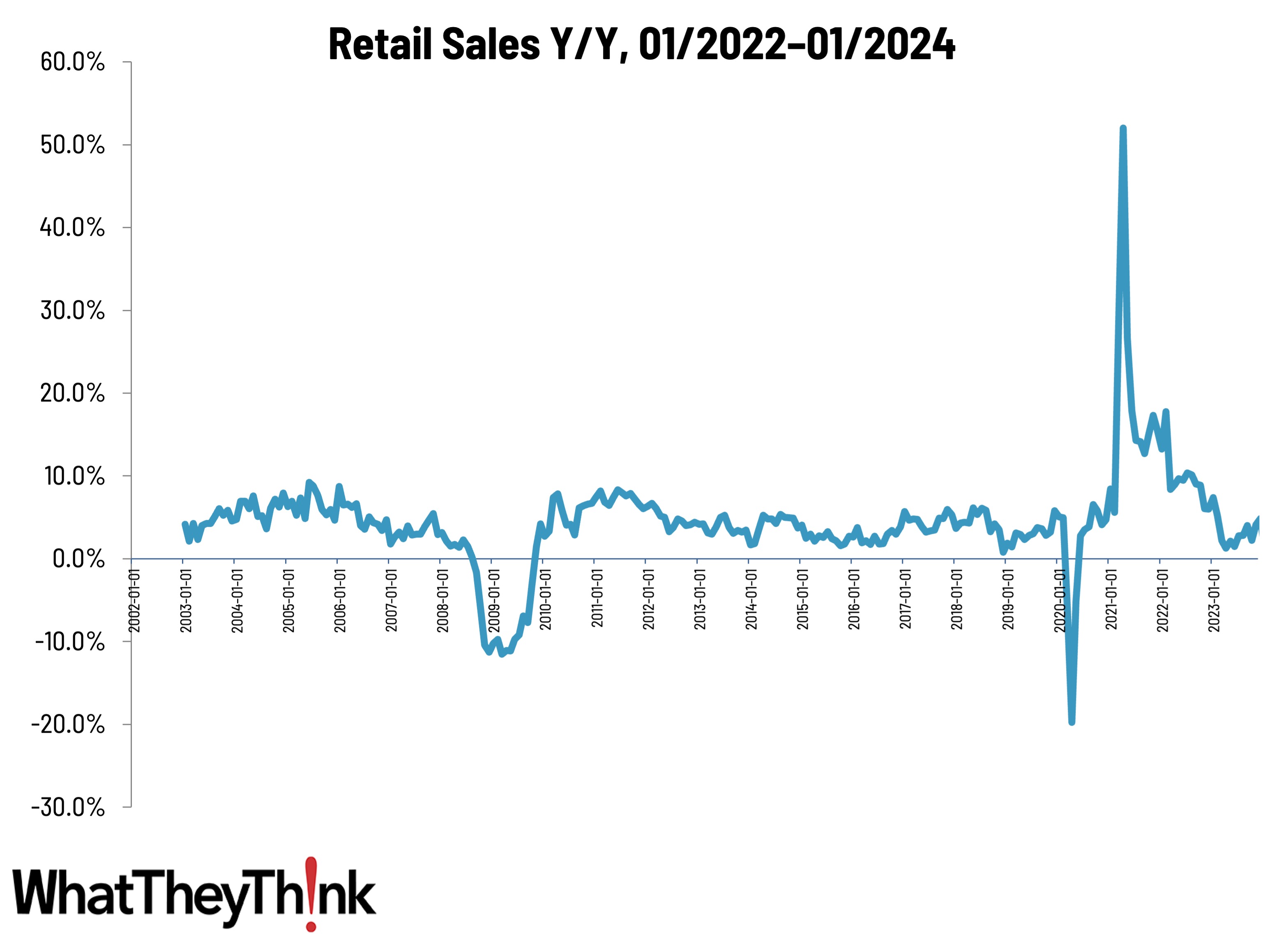
Our Friday data slice’n’dice look at the latest edition of County Business Patterns has been detailing the publishing industries. As 2021 began, there were 548 establishments in NAICS 51114 (Directory and Mailing List Publishing), a decrease of 67% since 2010.
The Bureau of the Census definition for this business classification:
This industry comprises establishments primarily engaged in publishing directories, mailing lists, and collections or compilations of fact. The products are typically protected in their selection, arrangement and/or presentation. Examples are lists of mailing addresses, telephone directories, directories of businesses, collections or compilations of proprietary drugs or legal case results, compilations of public records, etc. These establishments may publish directories and mailing lists in print or electronic form.
There is no mystery to what is happening with these businesses: directories and mailing lists, when they haven’t been replaced by Google, are distributed almost entirely electronically. The USPS’s woefully underutilized Every Door Direct Mail (EDDM) bypasses traditional directory publishers (when it’s used at all), although some commercial printers—such as 4Over—offer and promote their EDDM services.
Directory and mailing list publishing establishments—such as they are—are concentrated at the lower end of the employee-count spectrum. Small publishers (1 to 9 employees) comprise the bulk of the establishments, accounting for 71% of all establishments, with the other three size classifications just about equal.

These counts are based on data from the Census Bureau’s County Business Patterns. Throughout this year, we will be updating these data series with the latest CBP figures. County Business Patterns includes other data, such as number of employees, payroll, etc. These counts are broken down by commercial printing business classification (based on NAICS, the North American Industrial Classification System). Up next:
- 51119 Other Publishers
- 511191 Greeting Card Publishers
- 511199 All Other Publishers
These data, and the overarching year-to-year trends, like other demographic data, can be used not only for business planning and forecasting, but also sales and marketing resource allocation.
This Macro Moment…
Retail sales in January dipped slightly (-0.8%) from December, although were up 0.6% percent from January 2023. Says the Census Bureau:
Advance estimates of U.S. retail and food services sales for January 2024, adjusted for seasonal variation and holiday and trading-day differences, but not for price changes, were $700.3 billion, down 0.8 percent (±0.5 percent) from the previous month, and up 0.6 percent (±0.7 percent)* above January 2023. Total sales for the November 2023 through January 2024 period were up 3.1 percent (±0.5 percent) from the same period a year ago. The November 2023 to December 2023 percent change was revised from up 0.6 percent (±0.5 percent) to up 0.4 percent (±0.3 percent).

Source: US Bureau of the Census

Source: US Bureau of the Census
If you back out gasoline, retail sales were down -0.8% in January and, sans gas, up by 1.4% on a year-over-year basis. The retail sales data was below economists’ expectations.
Our Printing Outlook 2024 report is now available for download! The brand-new report provides detailed analysis of the latest WhatTheyThink Printing Industry Survey, the latest industry economic data and macroeconomic trends, as well as industry and cultural technological trends to look out for in 2024 and beyond. Purchase it now!













